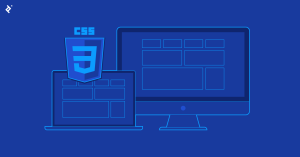 Cascading Style Sheets 3 (CSS3): Shaping the Web’s Visual Landscape
Cascading Style Sheets 3 (CSS3): Shaping the Web’s Visual Landscape
In the world of web development, creating visually stunning and responsive websites is essential to captivate the audience and deliver an exceptional user experience. Cascading Style Sheets 3, abbreviated as CSS3, stands as a pivotal tool in achieving this goal. In this comprehensive guide, we will delve into the realm of CSS3, exploring its core features, evolution, benefits, and practical applications.
Understanding CSS3
CSS3 is the latest iteration of the CSS language, which stands for Cascading Style Sheets. CSS is a stylesheet language used for describing the presentation of a document written in HTML (HyperText Markup Language). It allows developers to control the layout, design, and visual aspects of web pages, ensuring consistency and style throughout a website.
 Key Features of CSS3
Key Features of CSS3
- Enhanced Selectors: CSS3 introduces advanced selectors that enable developers to target elements with greater precision. These selectors include attribute selectors, nth-child selectors, and pseudo-classes, allowing for more specific styling.
- Responsive Design: CSS3 plays a significant role in creating responsive web designs. Media queries in CSS3 enable developers to apply different styles based on the device’s screen size, ensuring optimal display on various devices, from desktops to smartphones.
- Animations and Transitions: CSS3 introduces native support for animations and transitions. Developers can create smooth animations and transitions without relying on external libraries or JavaScript.
- Custom Fonts: With CSS3’s @font-face rule, developers can use custom fonts in web projects, expanding design possibilities and maintaining brand consistency.
- Box Model Adjustments: CSS3 provides features like box-sizing, which allows developers to control how an element’s width and height are calculated. This simplifies layout design.
- Gradient Backgrounds: CSS3 allows for the creation of gradient backgrounds using linear and radial gradients, reducing the need for image assets.
- Drop Shadows and Rounded Corners: CSS3 enables the creation of drop shadows and rounded corners for elements, enhancing the visual appeal of web designs.
Benefits of CSS3
- Efficiency: CSS3’s enhanced selectors and advanced features simplify the styling process, reducing the amount of code needed for complex designs.
- Faster Loading Times: As CSS3 reduces the reliance on images for design elements, web pages load faster, leading to improved user experiences and search engine ranking.
- Cross-Browser Compatibility: CSS3 is well-supported by modern browsers, ensuring consistent rendering across various platforms.
- Responsive Design: CSS3 facilitates the creation of responsive and mobile-friendly websites, catering to the growing mobile audience.
- SEO-Friendly: Faster loading times and cleaner code contribute to better search engine optimization (SEO) rankings.
Evolution of CSS3
CSS3 is the culmination of a series of CSS specifications that have evolved over time. It builds upon the foundation laid by CSS1 and CSS2, introducing new features and capabilities. The modular nature of CSS3 allows for gradual adoption of specific features, making it easier for developers to stay up-to-date with the latest trends in web design.
Practical Applications
CSS3 is employed in a wide range of web development projects, enhancing the visual appeal and functionality of websites:
- Responsive Web Design: CSS3’s media queries enable developers to create responsive websites that adapt to different screen sizes and orientations.
- Web Animation: CSS3 animations and transitions are used to create interactive and engaging user interfaces without relying on JavaScript.
- Custom Typography: CSS3 @font-face is employed to use custom fonts, ensuring branding consistency and unique typography choices.
- Cross-Browser Compatibility: CSS3 is utilized to ensure that websites render correctly on multiple browsers, reducing compatibility issues.
- Web Applications: CSS3 is essential for designing the user interfaces of web applications, providing a seamless user experience.
Getting Started with CSS3
If you’re eager to harness the power of CSS3, here are some essential steps to begin your journey:
- Learn the Basics: Start with the fundamentals of CSS, including selectors, properties, and values. Understanding how CSS works is crucial for effective styling.
- Explore Advanced Features: Dive into advanced CSS3 features like animations, transitions, and transformations to add interactivity and visual appeal to your projects.
- Responsive Design: Master media queries to create responsive layouts that adapt to different devices and screen sizes.
- Practice Regularly: The best way to learn CSS3 is through practice. Work on small projects and experiment with various CSS3 features to gain hands-on experience.
- Stay Updated: CSS3 is continually evolving. Keep abreast of the latest developments, browser support, and best practices in web design.
Conclusion
CSS3 has revolutionized web design by providing powerful tools and features that enable developers to create visually stunning and responsive websites. Its evolution from earlier CSS versions has introduced efficiency, flexibility, and enhanced design capabilities to the world of web development. Whether you’re a seasoned web developer or just beginning your journey, CSS3 is a fundamental skill that empowers you to shape the digital landscape with creativity and precision. Embrace the world of CSS3, and unlock the potential to craft captivating and user-friendly web experiences that leave a lasting impression.

